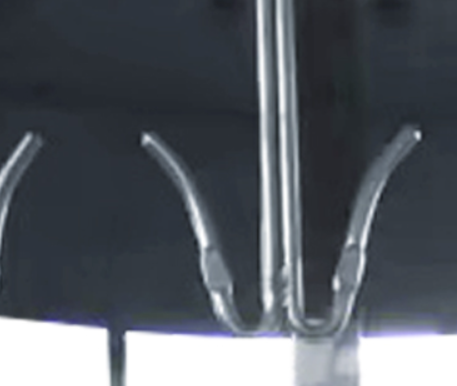Understanding the Cage System and Its Impact on Poultry Farming Practices Today
Nov . 10, 2024 07:12 Back to list
Understanding the Cage System and Its Impact on Poultry Farming Practices Today
The Cage System in Poultry Production An Overview
The cage system, particularly in poultry farming, has been a topic of substantial debate and discussion among animal welfare advocates, farmers, and consumers alike. This production method primarily involves housing birds in cages to maximize space, efficiency, and production rates. While there are distinct advantages to the cage system, it also raises ethical questions concerning the welfare of the birds involved.
Understanding the Cage System
The cage system is predominantly used in the production of eggs and meat, particularly in broiler chickens and laying hens. In layer operations, birds are often kept in battery cages, where they have limited space to move. These cages typically house multiple hens in a confined space, which can enhance productivity by facilitating easier management and maximizing egg production. Broiler chickens, on the other hand, may be housed in larger group settings, but some producers still utilize cages to streamline feeding and monitoring.
Advantages of the Cage System
The cage system offers several advantages that contribute to its widespread adoption. Firstly, it allows for higher stocking densities, meaning more birds can be raised in less space. This efficiency can lead to lower production costs and potentially lower prices for consumers. Furthermore, the close confinement aids in the management of birds, as it simplifies feeding, monitoring, and disease control.
Another significant advantage is the reduction in waste management challenges. Cages can help contain droppings, making it easier to maintain hygiene standards within poultry houses and reducing the risk of disease transmission among flocks.
From a financial perspective, the cage system also allows for quicker turnaround times in production cycles. Layer hens can start producing eggs at a younger age, and broilers can reach market weight faster than their free-range counterparts, which translates to increased profitability for poultry farmers.
cage system poultry

Animal Welfare Concerns
Despite the apparent benefits, the cage system raises pressing animal welfare concerns. Critics argue that the confinement of birds in crowded conditions leads to stress, aggression, and health problems. For instance, in battery cages, hens often cannot spread their wings, perform natural behaviors, or engage in social interactions, which are crucial for their overall well-being.
Moreover, studies have shown that hens kept in cage systems may experience higher rates of bone fractures and osteoporosis due to the lack of space and exercise. The inability to exhibit natural behaviors, such as nesting or foraging, can contribute to abnormal behaviors like pecking and feather picking, which not only affect the health of the birds but can also lead to fatal injuries.
Trends Towards Alternative Systems
In response to these concerns, there has been a noticeable shift in the poultry industry toward alternative housing systems, such as free-range, pasture-raised, and enriched cages. Enriched cages offer slightly more space and elements such as nesting boxes and perches, allowing hens to express more natural behaviors. Free-range systems permit hens outdoor access, providing an environment closer to their natural habitat, although this can introduce challenges related to predation and disease management.
These changes are driven in part by consumer demand for more humane treatment of animals and a growing awareness of the practices behind egg and meat production. Many retailers and food companies are beginning to phase out cage-produced products in favor of those sourced from more humane systems.
Conclusion
The cage system in poultry production remains a contentious issue, drawing a clear divide between efficiency and animal welfare. While it brings notable advantages in terms of productivity and management, the ethical implications for the birds involved are significant. As consumer awareness grows and demand for humane treatment of animals increases, the poultry industry may continue to evolve towards alternatives that balance productivity with ethical considerations. The future of poultry production will likely depend on finding sustainable practices that cater not only to economic needs but also to the humane treatment of animals. Transitioning towards better systems may lead to healthier chickens, happier consumers, and a more sustainable industry overall.
-
Hot Sale 24 & 18 Door Rabbit Cages - Premium Breeding Solutions
NewsJul.25,2025
-
Automatic Feeding Line System Pan Feeder Nipple Drinker - Anping County Yize Metal Products Co., Ltd.
NewsJul.21,2025
-
Automatic Feeding Line System Pan Feeder Nipple Drinker - Anping County Yize Metal Products Co., Ltd.
NewsJul.21,2025
-
Automatic Feeding Line System - Anping Yize | Precision & Nipple
NewsJul.21,2025
-
Automatic Feeding Line System - Anping Yize | Precision & Nipple
NewsJul.21,2025
-
Automatic Feeding Line System-Anping County Yize Metal Products Co., Ltd.|Efficient Feed Distribution&Customized Animal Farming Solutions
NewsJul.21,2025






